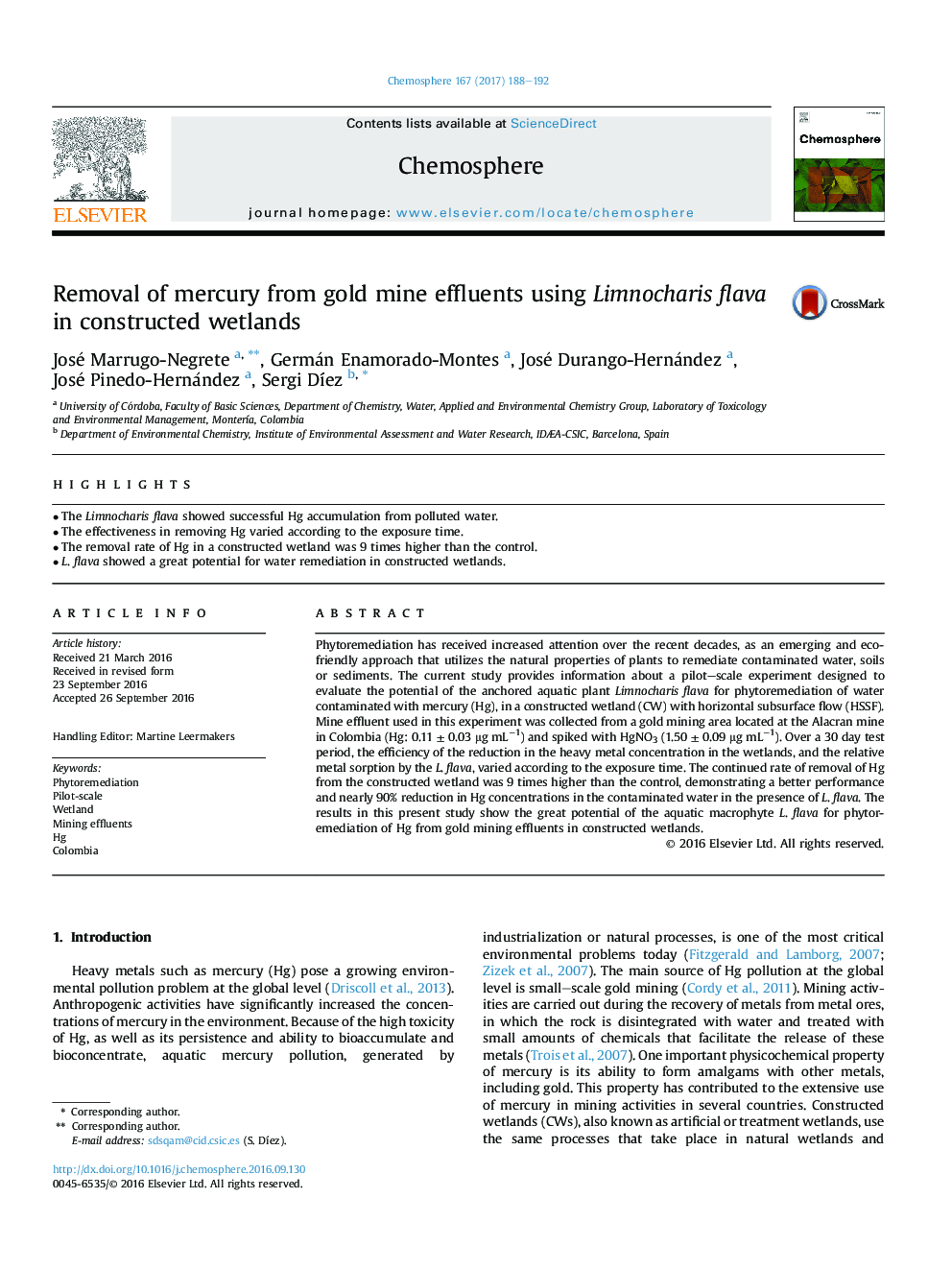| Article ID | Journal | Published Year | Pages | File Type |
|---|---|---|---|---|
| 6305893 | Chemosphere | 2017 | 5 Pages |
Abstract
Phytoremediation has received increased attention over the recent decades, as an emerging and eco-friendly approach that utilizes the natural properties of plants to remediate contaminated water, soils or sediments. The current study provides information about a pilot-scale experiment designed to evaluate the potential of the anchored aquatic plant Limnocharis flava for phytoremediation of water contaminated with mercury (Hg), in a constructed wetland (CW) with horizontal subsurface flow (HSSF). Mine effluent used in this experiment was collected from a gold mining area located at the Alacran mine in Colombia (Hg: 0.11 ± 0.03 μg mLâ1) and spiked with HgNO3 (1.50 ± 0.09 μg mLâ1). Over a 30 day test period, the efficiency of the reduction in the heavy metal concentration in the wetlands, and the relative metal sorption by the L. flava, varied according to the exposure time. The continued rate of removal of Hg from the constructed wetland was 9 times higher than the control, demonstrating a better performance and nearly 90% reduction in Hg concentrations in the contaminated water in the presence of L. flava. The results in this present study show the great potential of the aquatic macrophyte L. flava for phytoremediation of Hg from gold mining effluents in constructed wetlands.
Related Topics
Life Sciences
Environmental Science
Environmental Chemistry
Authors
José Marrugo-Negrete, Germán Enamorado-Montes, José Durango-Hernández, José Pinedo-Hernández, Sergi DÃez,
